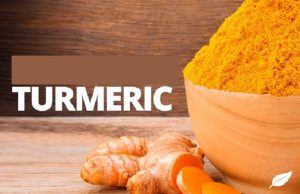
Indian Turmeric Industry
Turmeric, otherwise called Haldi, is a Kharif spice planted and developed during the long stretches of June to August, in most parts of India for the most part in Telangana, Maharashtra, and Tamil Nadu. The new yield is earned from February to April.
The planting of turmeric depends upon the storm and climate conditions during the said period. Large precipitation with great measures of water content in the dirt progresses the yield.
INDIAN MARKET
India is the biggest maker and exporter of turmeric. India sent out US$ 236.5 million worth of turmeric in 2018 from US$ 182.53 million out of 2017.
Related Projects:- Fast Moving Consumer Goods (FMCG) Projects
Despite a steady and huge foundation, India imports turmeric too. Turmeric imports by India are essentially ascribed to three elements. Because of industry inputs, the most significant factor is the value distinction between the local and universal turmeric
- the rate substance of curcumin
- dull yellow shading, oleoresin and
- basic oil, and so on the present in a particular variety of turmeric
Is additionally an important factor for the inclination of the collection. The occasional unpredictability in yield of turmeric is mostly affected by the precipitation and other climatic components
Thus, India processors and extraction industry imports turmeric from Indonesia, Ethiopia, Myanmar, and Vietnam essentially because of the value difference. The worth included item created by the extraction of business and food handling (mixing) projects is additionally used by therapeutic, beauty care products, and food preparing (FMCG) enterprises.
Related Books: – Agriculture, Agro Based, Bakery, Wood
Northern pieces of Karnataka and southern regions of Andhra Pradesh additionally grow turmeric. A few variations of turmeric are developed in India, predominantly finger, bulb, and Rajapuri.
The extraction and food handling (mixing) businesses are among the greatest buyers of turmeric. The level of curcumin and oleoresin content in turmeric decides the interest of the business together with the cost. According to industry inputs, the cost of turmeric in the household is exclusive of taxes and import charges.
Related Projects: – Food Processing and Agriculture Based Projects
Cost likewise assumes a basic job in deciding how the planting. More significant expenditures are by and large determined to expand planting of turmeric, while lower costs can prompt harvest changing to soybean, cotton, and maize.
Costs vary with variations, in supple of value and dampness content. The variation that is recorded on the NCDEX trade is the Finger Turmeric, which is light yellow in shading. India is among the top producers and exporters of turmeric in the global market. Other worldwide makers incorporate South Asian states, Central and Latin America, and Taiwan.
Extended interest with the beginning of rainstorm season and lower appearances in the Nizamabad showcase prompted an increase in turmeric future costs.
Farmers, as well, have additionally been keeping down their stocks because of lockdown in Tamil Nadu and Telangana. This has made an elegant snugness in the household publicize and has likewise boosted costs in recent weeks.
Related Books:- Food Processing, Food Industry, Agriculture, Agro Processing
FINAL VIEWS:
Additionally, positive storm reports by IMD has improved the opinions for higher planting in Telangana, Tamil Nadu, and Maharashtra. This is trusted to bring lower supplies in the coming a long time as farmers are required to be occupied with the equivalent. Moreover, grasshopper attacks keep on upsetting northern areas that can make pressures in the southern states as insects for the most part breed in the rainstorm season.
Related Videos: – Agro-Food Processing Industries
Indian turmeric has the most noteworthy curcumin content on a normal according to TNAU and industry inputs, anyway attributable to low costs, there has been a reliable interest for imported turmeric from Ethiopia and Myanmar throughout the years. As of late the best position in wording for the greatest exporter of turmeric to India was taken over by Vietnam.